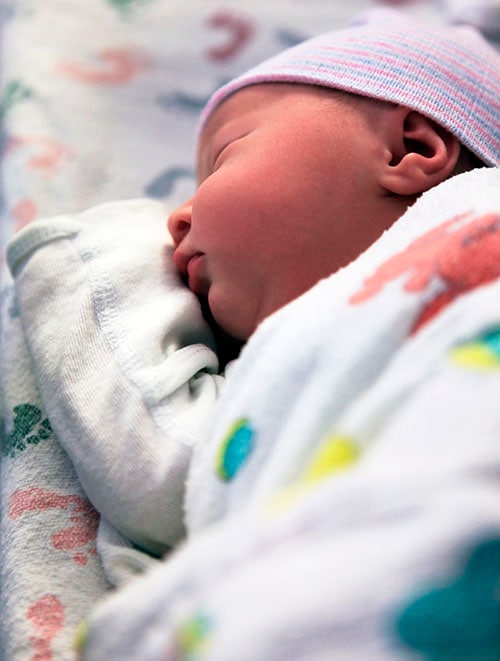Urologic Management to Preserve Initial Renal Function Protocol for Young Children with Spina Bifida (UMPIRE)

Spina bifida is a birth defect of the spine. Damage to the spinal cord and nerves may keep brain signals from reaching the bladder, preventing the bladder from functioning correctly. When the bladder does not work properly, urine can back up into the kidneys, possibly causing kidney damage.
Many babies born with spina bifida have healthy kidneys at birth,1 but are at risk for developing kidney failure at a younger age than those without spina bifida.2 The regular monitoring and testing developed through the UMPIRE project helps identify kidney disease earlier, which may keep it from getting worse.
How UMPIRE works
- Staff at spina bifida clinics participating in the UMPIRE program identify all newborns and infants up to 3 months old who have a diagnosis of myelomeningocele, the most severe form of spina bifida.
- Parents who agree to have their infants included in the UMPIRE program bring their infants to an UMPIRE clinic on a regular schedule.
- Doctors and nurses at UMPIRE clinics conduct blood tests, monitor bladder and kidney function, and watch for infections in the infants’ urinary tracts.
- All UMPIRE clinics deliver similar care on the same schedule over the course of several years.
- CDC researchers collaborate with doctors and nurses at UMPIRE clinics to find early signs of kidney problems among infants with spina bifida.
- Clinicians at UMPIRE clinics continuously update and improve the care they provide, based on how the infants enrolled in UMPIRE are doing.

The UMPIRE program began in 2014, and researchers hope to continue following the first group of infants until they are 10 years of age, while also adding more newborns with myelomeningocele as they are born. The more years of data researchers have, the better they can track the long-term kidney health of these babies. Please click on this link for a list of participating CDC-funded UMPIRE clinics.
Throughout the duration of the UMPIRE program, researchers and clinicians will continue to analyze data and publish findings on the best standard of care to protect the kidneys of newborns and infants with spina bifida.
UMPIRE research
- Identify whether all infants with myelomeningocele routinely need preventive antibiotics to avoid urinary tract infections.
- Standardize how clinicians administer and interpret common bladder and kidney tests, so that UMPIRE data can improve clinical practice for all babies and young children with myelomeningocele.
- Determine the characteristics that are most important for indicating which babies and young children born with myelomeningocele are likely to have kidney problems. Researchers may investigate whether the location of the spina bifida lesion along the patient’s spine is important in identifying which patients are more likely to have kidney problems later in life.
- Determine if researchers can link hospital records with UMPIRE data to gather more medical information on UMPIRE program participants.
- Evaluate differences in the cost of care and health outcomes between patients included in the UMPIRE program and patients not included in the program.
References
- Tanaka ST, Paramsothy P, Thibadeau J, Wiener JS, Joseph DB, Cheng EY, et al.
Baseline urinary imaging in infants enrolled in Urologic Management to Preserve Initial Renal Function (UMPIRE) protocol for children with spina bifida.
J Urol. 2019 Feb 5. - Ouyang L, Bolen J, Valdez R, Joseph D, Baum MA, Thibadeau J.
Characteristics and survival of patients with end stage renal disease and spina bifida in the United States renal data system.
J Urol. 2015 Feb;193(2):558-64. - Wallis, M. C., Paramsothy, P., Newsome, K., Williams, T., Routh, J. C., Joseph, D. B., … & Wiener, J. S. (2021). Incidence of urinary tract
Resources
UMPIRE program design and methodology
Your Kidneys and How They Work
The National Institute of Diabetes and Digestive and Kidney Diseases
https://www.niddk.nih.gov/health-information/kidney-disease/kidneys-how-they-work
Kidney Disease
The National Institute of Diabetes and Digestive and Kidney Diseases
https://www.niddk.nih.gov/health-information/kidney-disease
Symptoms and Causes of Bladder Control Problems
The National Institute of Diabetes and Digestive and Kidney Disease
https://www.niddk.nih.gov/health-information/urologic-disease